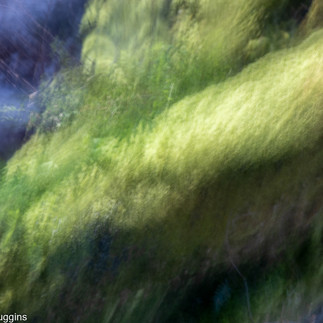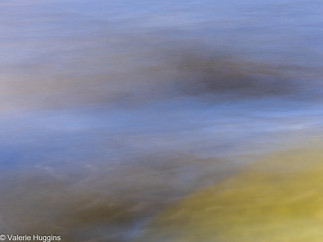Natural Connections in a Changing World
- valeriehuggins0
- Mar 21, 2024
- 4 min read
“Connection isn’t about nature in our service, a slave to our needs, a commodity for our use, a sticking-plaster for our stresses. Nature isn’t there to provide us with therapy; that isn’t what connection is about. Connection is about love. Enchantment. Wonder. And a necessary and appropriate sense of awe.” Sharon Blackie
Wow, what powerful words. They struck me to my core. I recognise that I am in danger if doing this, of using the natural world as my respite, my escape. Am I also a 'consumer' adding to the pressure on our remaining natural spaces? Is my 'love' of the natural environment a true connection or am I exploiting these diminishing places for my own personal gain?
I had these thoughts in my mind as I headed to Dartmoor last week. I was in search of somewhere new to visit and explore. An adventure. A refresh. Looking for a different place to photograph to stimulate my creativity.

I ended up at Huccaby Bridge near Hexworthy on the River Dart. The constant rainfall over this winter meant that the river was very high, raging over the boulders in her way. The sound of the rushing water was exhilarating, the shafts of sunlight adding sparkle to the droplets as they splashed into the air, and suddenly I felt the connection that Sharon writes about.
But as I sat there by the river, watching how the water became flat and calmer as it went under the bridge, I recognised that yes, I was 'using' this place as a 'commodity', able to access it because I have a car and had the time to drive there.
So how as humans do we move from seeing the natural world as a resource for us to exploit to becoming connected to it in ways that are not all take and no give? Perhaps one way is to immerse oneself in the environment. My approach has become to sit in the space, breathe in the air and let go of as much of my whirl as I can. I then spend time journalling, writing about what is catching my eye and my emotional response, before I get out my camera.
And on this morning, sitting by the river, observing, losing myself in its beauty I did feel a deep connection to the environment that I was in. Although this part of the river was a new place to me, the elements were so familiar. The waters of the River Dart, the mossy stones and tree trunks, the bridge that has lasted over centuries.
My spirits were raised by the delicacy of the emerging Spring blossom:
and the contrasting shadows and patterns as I walked across the bridge:
I was soon playing with camera settings to catch the flow of the water. My woodland workshop with Paul Mitchell last year came to good use, and yes, I even used a tripod! I slowed right down, experimented with varying the shutter speed and was soon absorbed. Feeling that connection that Sharon writes about.
Tiring of the restraints of the tripod (!) I walked along the river bank. I was the only one there on this nearly-Spring morning and I sat on a stone with my feet almost in the water. I realised that the scene in front of me was actually quite 'busy'.

There was the blue and white of the water tumbling over the boulders in her way, then stilling into dark orangey-brown, bubbly pools.
I noted the wide variety of the trees on the river banks, some with new bright green leaves just emerging, while the beeches still had their bronze leaves of autumn. Some of the trunks were dark with moss and reached out over the river. As I sat there, the sun was coming out from behind the clouds, providing unexpected shafts of delight, dancing and sparkling on the water, and then disappearing again. How to capture this? I decided to try ICM (intentional camera movement), starting with a jerky, shuddery style, to reflect all this business and movement:
and then I moved on to a longer shutter speed and smoother movements, following the flow of the water. Such beautiful blues and greens emerged.
And then, in came the rain! Heavy, cold Dartmoor downpour sent me rushing back to the car. I sat and watched it streaming on my windscreen and sadly realised it was in for the rest of the day. I headed home over the moor, thinking again about Sharon's words and the place that nature plays in my life. Yes, visiting a natural space can provide a temporary 'sticking plaster' for the stresses that I currently have, but it is more than that. It is the daily wonder and enchantment that comes with being willing to stop and stare and appreciate, with or without a camera! If I am legitimately receiving real benefits from nature, I have a responsibility to protect and care for her to have respect for what she offers. Each pleasurable and nourishing encounter that I enjoy elicits powerful and grateful feelings that carry me through.
Please read more of Sharon Blackie's writings, such as 'How myth and story can help us belong to our places: reenchanting the earth'.
There is also a book Dartmoor Dreams, which is the result of a collaboration between It includes the photographer Carol Ballenger and poet John Powl. It includes 'The Touchstone' which is inscribed on the first standing stone to be erected on Dartmoor since the Bronze Age:
Inspiring
This stone touching
Open moor and sky
Granite landmark
Raised to stand
For all times
As one time;
Now, then and ever
In love and beauty
Our story is a book
Always open at the centre
Half of experiences
Half of un-named hopes.
John Powls 1999
There was so much hope at the turn of the new century. We are almost a quarter of the way through it and we now have to urgently name our hopes, to work together to alleviate the worst of the climate breakdown. The WWF has some a list of 10 things we can do to help save the planet - very worthy - but the planet will survive. The River Dart will still tumble from the moor to the sea. Who will be there to witness it?































































Comments